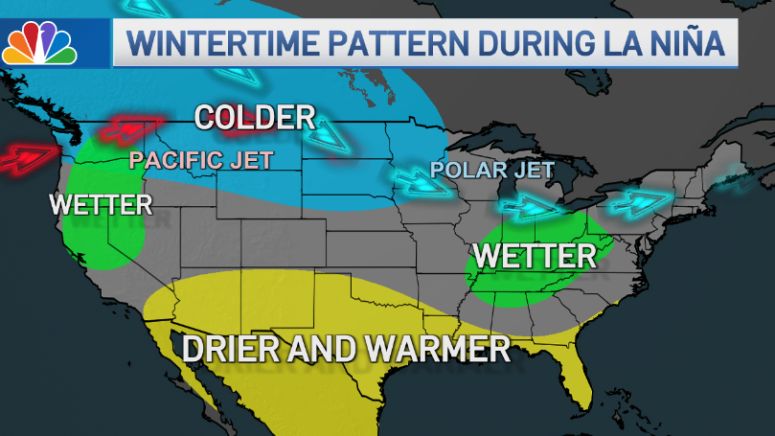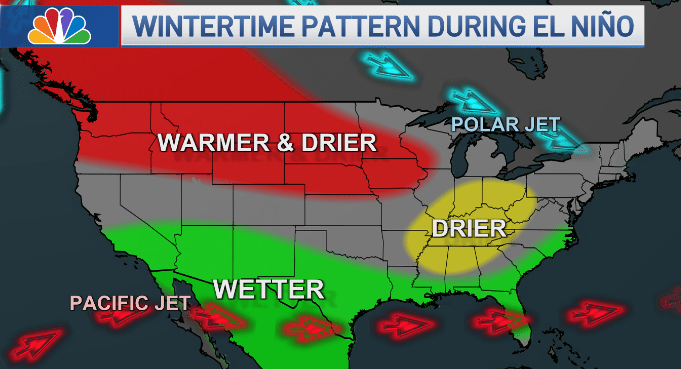After three long years of the La Niña weather pattern, which typically increases western drought, the National Oceanic and Atmospheric Administration announced it's now gone.
“The end of La Niña is determined based on the water temperatures in the central and eastern pacific,” said Brandt Maxwell, a meteorologist with the National Weather Service.
A La Niña occurs when the central and eastern Pacific Ocean, which is tropical in nature, experiences colder than average surface ocean temperatures. It has the opposite impact from El Niño, which occurs with warmer surface ocean temperatures. Both events influence weather patterns, ocean conditions and marine life.
Both La Niña and El Niño are simply terms to describe the weather phenomenon that involves changing surface ocean temperatures in the central and eastern equatorial Pacific throughout the year.
Get top local stories in San Diego delivered to you every morning. >Sign up for NBC San Diego's News Headlines newsletter.
“La Niña means we're more likely to get warmer and drier air, but it's sort of like rolling the dice,” said Maxwell. “You get more favorable dice rolls for drier, warmer conditions during La Niña, but you can still get that dice roll that we had this winter of colder wetter conditions.”

El Niño, on the other hand, is linked to a higher probability of above-normal rainfall in California. According to Maxwell that could be on the way for us.
Local
“There's about a 60% chance that that will happen later on this year, possibly as early as this summer,” said Maxwell. “That means the East Pacific is more likely to get hurricanes, which would track generally to our south, and then also, you're more likely to get wetter winters in Southern California.”
One of the strongest El Niño on record was recorded in the winter of 2015 and 2016. It contributed to high wave energy along the west coast and recorded coastal erosion on many California beaches.

In 2017, we went back to La Niña. Then in 2018 and 2019, we had El Niño come back, but we haven’t seen it since.
“We are indeed now back into the neutral phase, which means you're effectively in between a La Niña and an El Niño.”
Maxwell says a neutral phase could make for unpredictable weather over the next few months. So whether you’re tired of the rain or not, at least for now, your local forecast is something worth keeping an eye on.



